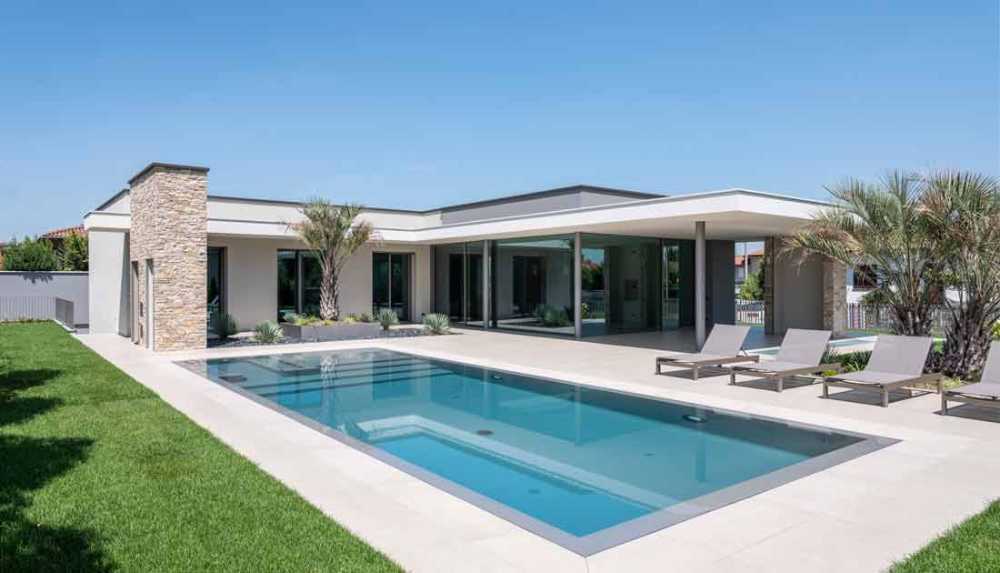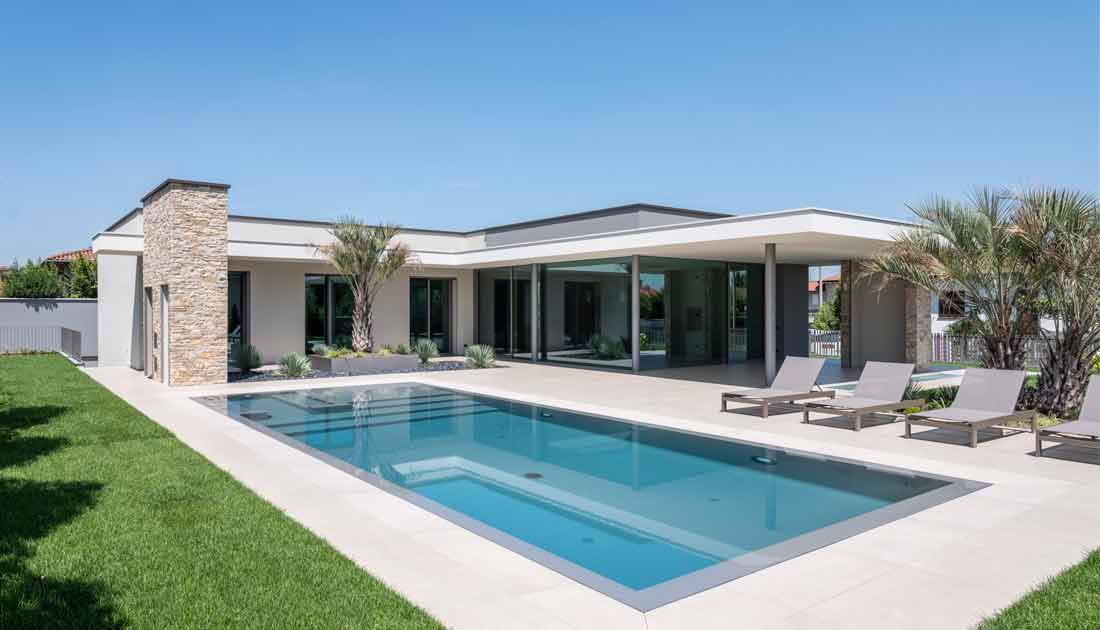

Meticulousness in architectural design: the solar contribution
Villa Noal is designed by Andrea Benedetti, founder of Panificio Architecture Workshop, known for architectural projects focused mainly on renovation, both on a small and large scale. The design of Villa Noal places emphasis on orientation and the free solar gains. The depth of the overhangs creates spacious porches where one can "inhabit" the outdoor space, while also serving as protectors of the interior spaces from the sun.

























